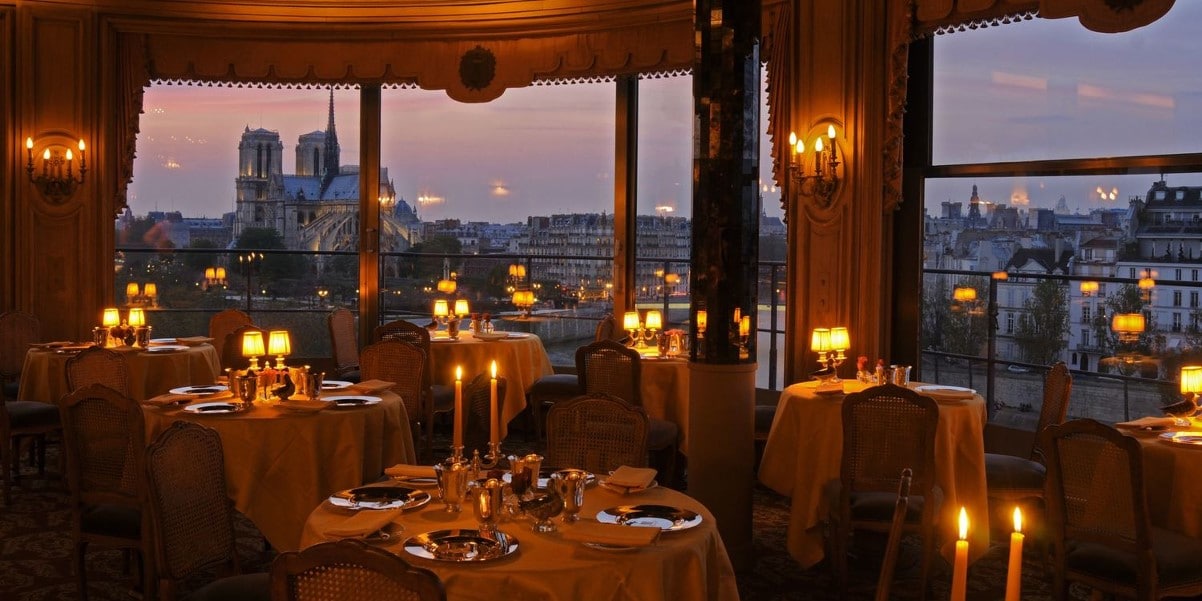Restaurant : A restaurant is a establishment where we serve meal in menu or carte, at displayed prices and at fixed or "non-stop" times and in certain big cities 24 hours on 24 and seven days out of seven.
Appearing in the XNUMXth century, the word restaurant first pointed to a " food , promising restores ».
Jean-Anthelme Brillat-Savarin proposes a definition in his Physiology of Taste (1825) "A restaurateur is the one whose trade is to provide the public with feast always ready and whose dishes are detailed in servings at fixed prices, at the request of consumers. The establishment is called a restaurant, whoever runs it restaurateur ».
From this meaning, which survived until the 1771th century, we passed to that of "establishment specializing in the sale of restaurants" (Dictionary of Trévoux, 1725). Until the end of the XNUMXth century, we could only find food, for a fee, in inns and taverns (see Table d'hôte, Caterer). In Madrid, it was in XNUMX that the restaurant Botin's sobrino opens its doors which are still open today and make it the oldest restaurant in the world, entering the record books Guinness Book.
The American writer Ernest Hemingway (1899-1961) mentions in his novel The sun is also rising that he had lunch there in 1926.
In Paris, it was around 1765 that a named Boulanger, a “bouillon merchant”, wrote on his sign: “Boulanger sells divine restaurants”. He was followed by Roze and Pontaillé (who in 1766 opened a “health center”); but the oldest Parisian restaurant worthy of the name was the one that Beauvilliers founded in 1782, Richelieu Street, under the name of Grande Taverne de Londres: for the first time, dishes from a menu were served at set times at small individual tables.
Restaurants for all: The Revolution favored the restoration the abolition of corporations and privileges gave greater facilities to settle. The first to take advantage of it were the cooks and servants of the noble houses, said the masters had emigrated.
In France, two revolutionary circumstances led to the birth of restaurants. The departure in the emigration of the employers of great cooks and the passage of the Le Chapelier law (June 14, 1791) suppressing the corporations with their monopolies, which allowed the first "restaurants", in the world of caterers, roasters and innkeepers, without to talk about cabarets, to take a place in gastronomy with a quality similar to that of the tables of the nobles and the rich, says the Dictionnaire Culturel en Langue française.
In addition, the arrival in Paris of many representatives of the people from the province created a clientele of regulars, to which was added that of journalists and businessmen. A certain appetite for good living, after a troubled time, and the possibility of being able to access pleasures hitherto reserved for the rich made restoration, under the Directory, a real institution.
After the vogue of Palais Royal, then Halles, it was the era of Grands Boulevards as well as Madeleine, then Champs-Élysées, but alsoin Villette, BercyAnd then Montparnasse, Rive gauche, without forgetting the barrier of Clichy or the heights of Montmartre. But the major regional gastronomic stops - which often mark out tourist routes along the route of the former post houses - rediscovered by gourmets like Curnonsky et Marcel rouffsoon rivaled the culinary highlights of the capital.
Today, “out-of-home” catering is organized into several categories with community catering (businesses, schools, hospitals), constantly growing, both quantitatively and qualitatively, fast food, with croissanteries and, kebab and American-style fast food, and traditional catering, ranging from bistros to starred gourmet restaurants. It is the latter which is judged in the guides, the reception and cooking levels being symbolized by stars, cutlery (fork, couteau, ...), points, touches.
Great Restaurants:
- L'Auberge du Pont de Collonges
- La Closerie des Lilas (Café)
- La Coupole (Brewery)
- La Rotonde (brewery)
- Lapérouse (restaurant)
- Lasserre (restaurant)
- Laurent (restaurant)
- The Dome (cafe)
- Le Fumoir (cafe-restaurant)
- The Gavroche (restaurant)
- Le Grand Colbert (restaurant)
- Le Grand Véfour (restaurant)
- The Jules Verne (restaurant)
- The Louis XV (restaurant)
- The Mirazur (restaurant)
- The Pre Catalan (restaurant)
- Le Select (Brewery)
- The Waterside Inn
- Ledoyen (restaurant)
- Les Deux Magots (coffee)
- The Great Buffets in Narbonne
- Lipp (brewery)
- Louis Vuitton DREAM in Paris
- Lucas (restaurant)

